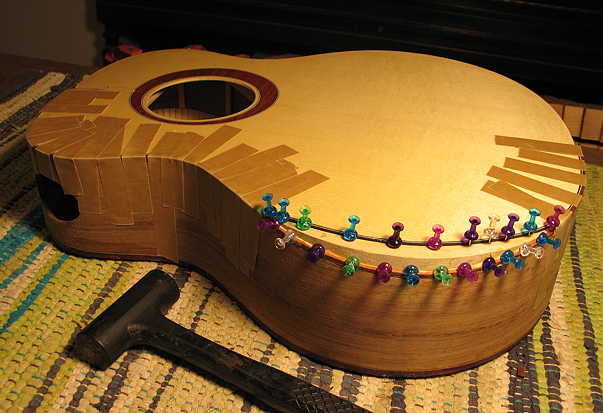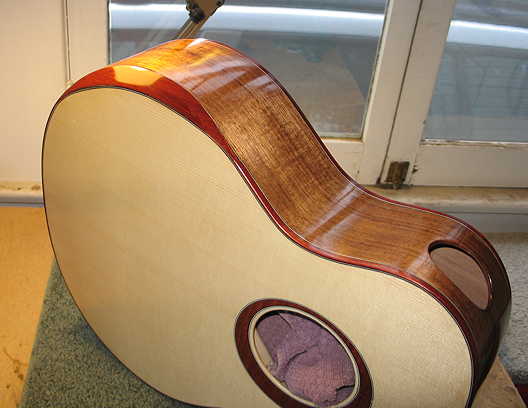Mike O'Melia wrote:
Is the transition to bevel idea based on "widening" the binding material? If my binding is curly maple, should I plan on using a curly maple veneer over the bevel?
I think I am starting to see how this works (hopefully)
Mike
I think I am starting to see how this works (hopefully)
Mike
Mike: I've only done one transitional arm bevel so far (http://theamateurluthier.com/retirement/htmlpages/gsmini.html), following Kent Everett's DVD (teaser: https://www.youtube.com/watch?v=X3Uqc_O2kDE).
He glues the bevel's purfling and binding (sanded down to a bit above the binding's purfling) to the cut-out edges on the top and side first, before filing the bevel down. No routing has to be done for the bevel's purfling. Then he adds a thin strip of purfling to the top's purfling, to provide a buffer zone, for when he files down the bevel wood flush to the top & side purfling strips. A veneer is then glued to the bevel.

